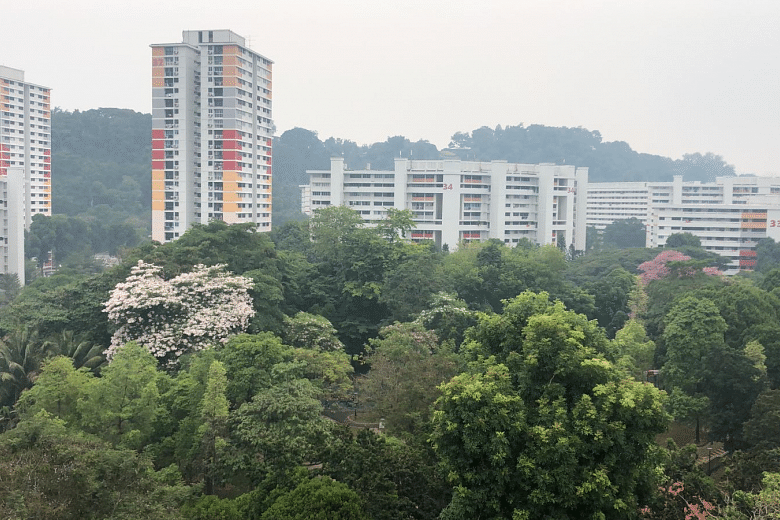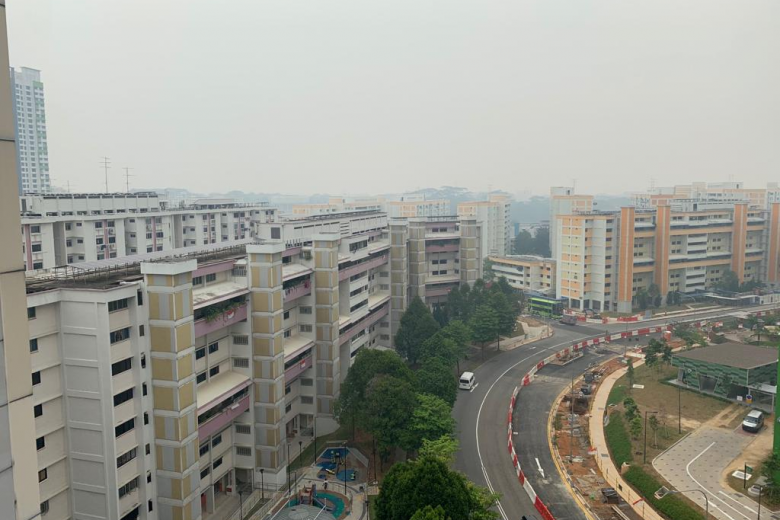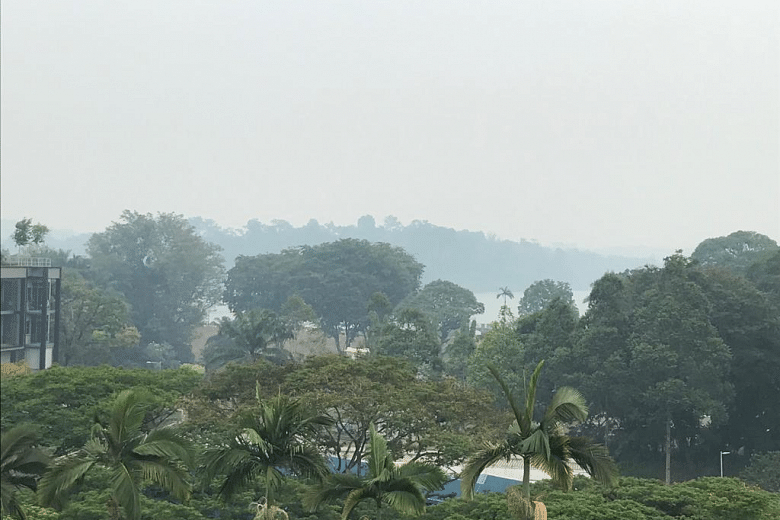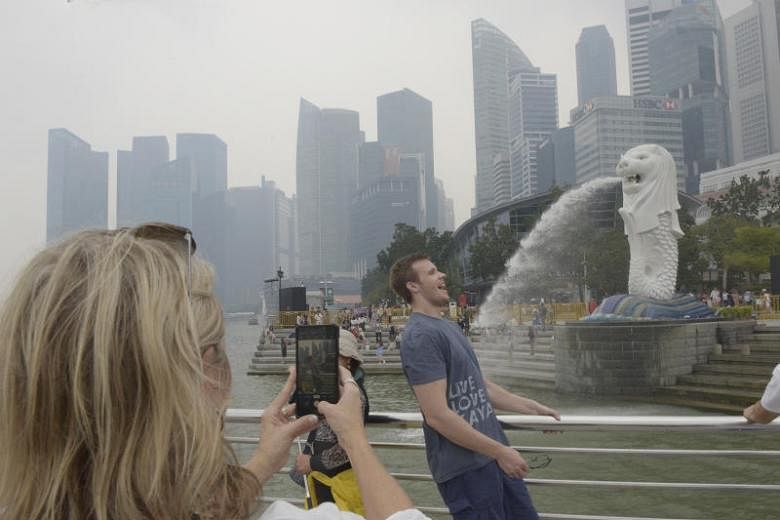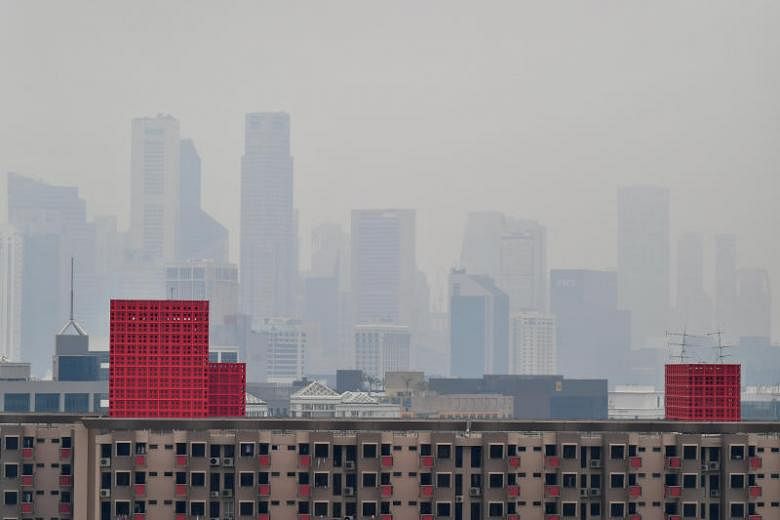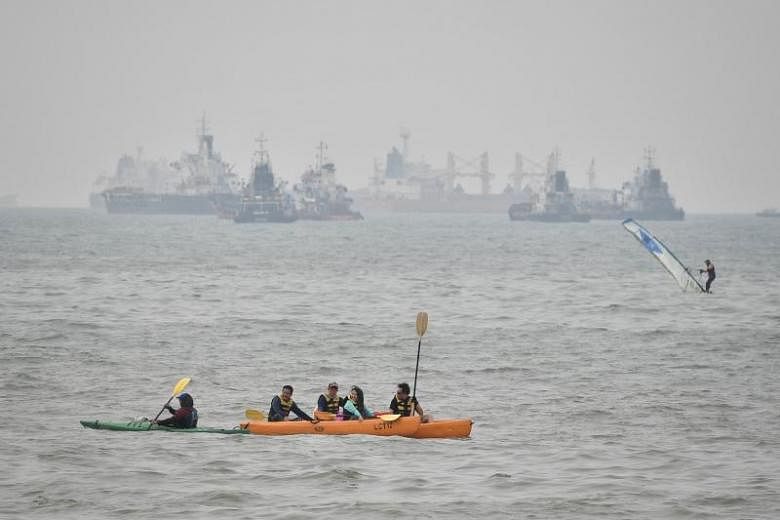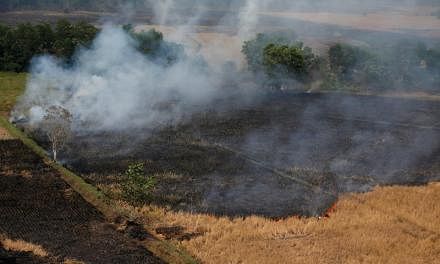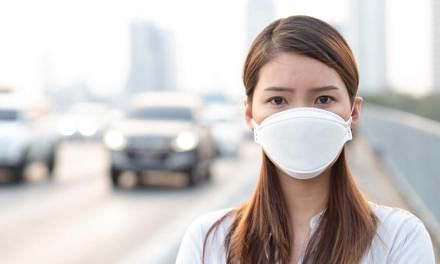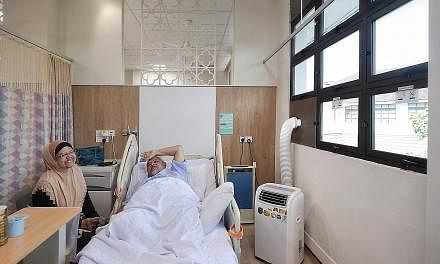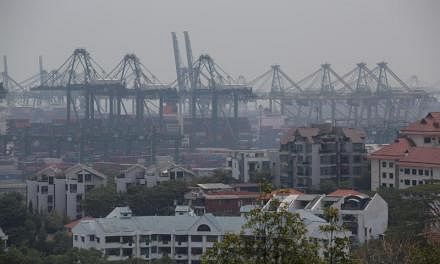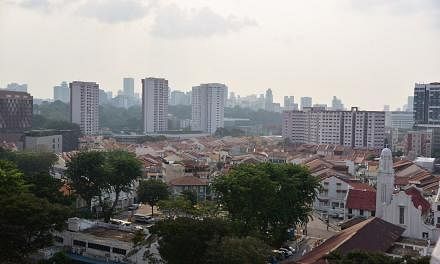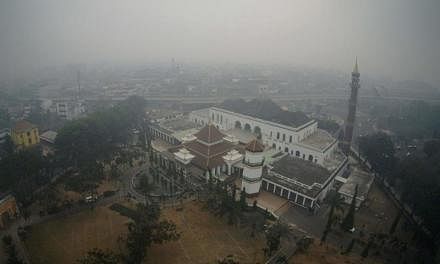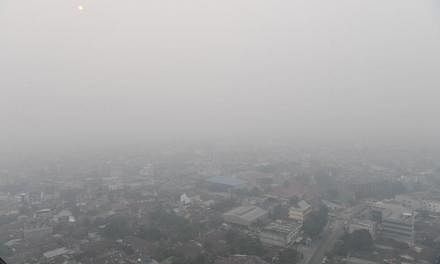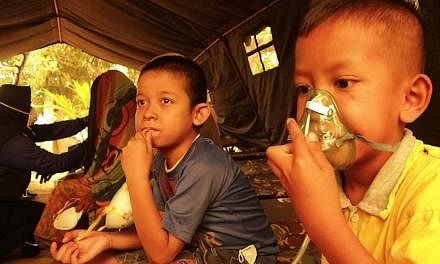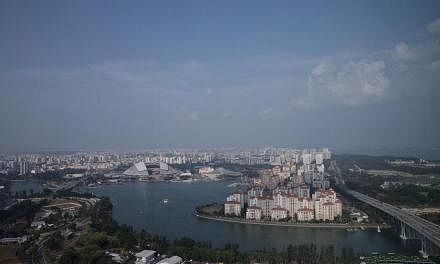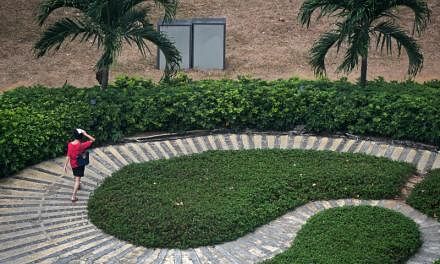SINGAPORE - Air quality took a sharp turn for the worse on Saturday (Sept 14), with the PSI reading crossing the unhealthy level for the first time in three years.
The 24-hour PSI readings ranged between 96 and 114 at 11pm, with the highest recorded reading in western Singapore.
A PSI reading of 101 to 200 is in the unhealthy range, for which the National Environment Agency (NEA) advises the public to cut down on outdoor activities.
The NEA warned that the PSI for the next 24 hours is forecast to range between the high end of the moderate and the low end of the unhealthy range, and may enter the mid-section of the unhealthy range if denser haze is blown in.
In August 2016, the PSI exceeded 100 and haze conditions in Singapore hit unhealthy levels.
Singapore experienced severe haze conditions in 2015, with the PSI crossing 300 to reach the hazardous level.
It said that the worsening conditions were due to wind patterns over the nearby region that led to more haze from Sumatra being blown towards Singapore. For the rest of the day, hazy conditions are expected to persist and the prevailing winds are forecast to blow from the south-southeast or south-southwest.
PM2.5 concentration readings, which NEA said are a better indication of current air quality, began reaching high levels at 3pm. At 11pm, the scale ranged from 77 in the north to 97 in the south.
PM2.5 readings measure the concentration of tiny particles less than 2.5 micrometres in diameter - or about one-thirtieth the diameter of a human hair - in the air.
According to the NEA, there are four bands on the PM2.5 concentration scale: 0 to 55 for normal, 56 to 150 for elevated, 151 to 250 for high, and very high for any higher readings.
Minister for the Environment and Water Resources Masagos Zulkifli said the returning haze conditions were a problem that had affected the Asean region for many years.
"This is why there is need for stronger resolve and cooperation amongst Asean countries and stakeholders, in order to achieve our vision of a haze-free Asean by 2020," he said in Facebook post on Saturday.
"As always, we stand ready to help suppress the fires on the ground. Singapore has offered technical firefighting assistance to Indonesia and is prepared to deploy them if requested by Indonesia."

Dr Jim Teo, 45, a respiratory physician from Parkway East Hospital, told The Straits Times he has seen an approximate 10 per cent increase in the number of patients seeking his advice on the deteriorating air quality.
He said these patients were usually from groups more vulnerable to changes in air quality, such as those with asthma or sensitive nasal tracts.
However, he noted that it was not yet necessary for the public to wear N95 face masks.
He said: "Unless you are spending long hours working outdoors, the N95 is not required below a 24-hour PSI reading of 300."
"There are many factors contributing to the burning smell of the haze that is not necessarily correlated with the index readings."
Many Singaporeans found the weather on Saturday too hazy for venturing outdoors.

Analyst Jeslyn Lerh, who lives in the west, said her plans to get some exercise outdoors at Bukit Timah Hill had to be changed. The 26-year-old said: "The haze foiled my plans to go trekking today. The smoke is infiltrating my apartment and we are turning on extra fans just to disperse it."
Clarisse Ong, who lives in Upper Bukit Timah, also had to stay indoors. The eight-year-old said: "There is a lot of haze, it's very bad! I cannot bring my dogs to the park and play outdoors."
Some, however, were undeterred by the haze and went ahead with their weekend plans.
Air Force Engineer, Mr Robson Phan, 51, decided to go for his run at East Coast Park on Saturday evening despite the haze.
"I saw the haze this morning and did not run. But I am used to running over the weekend and it is part of my lifestyle so I went ahead with it," he said.

In addition to PSI levels, the NEA said that the health impact of haze is also dependent on one's health status and the length and intensity of outdoor activity. Those who are not feeling well, especially the elderly and children, and those with chronic heart or lung conditions, should seek medical attention.
On Friday evening, the NEA said that it detected hot spots in both Sumatra and Kalimantan in Indonesia, although based on the prevailing wind direction, it is haze from Sumatra that has been affecting Singapore.
A total of 156 hot spots were detected in Sumatra, mainly in the central and southern parts of the Indonesian island.
On Saturday, the number had risen - NEA said a total of 450 hot spots were detected, mostly in the Riau, Jambi and South Sumatra provinces.
The NEA predicted for the weekend to remain hazy, although there may be brief showers that could alleviate the situation.
The NEA website www.nea.gov.sg will provide regular updates on the haze situation.
Are you affected? Send your photos to stnewsdesk@sph.com.sg and tell us how you're dealing with the situation. We may use your contributions on straitstimes.com.




